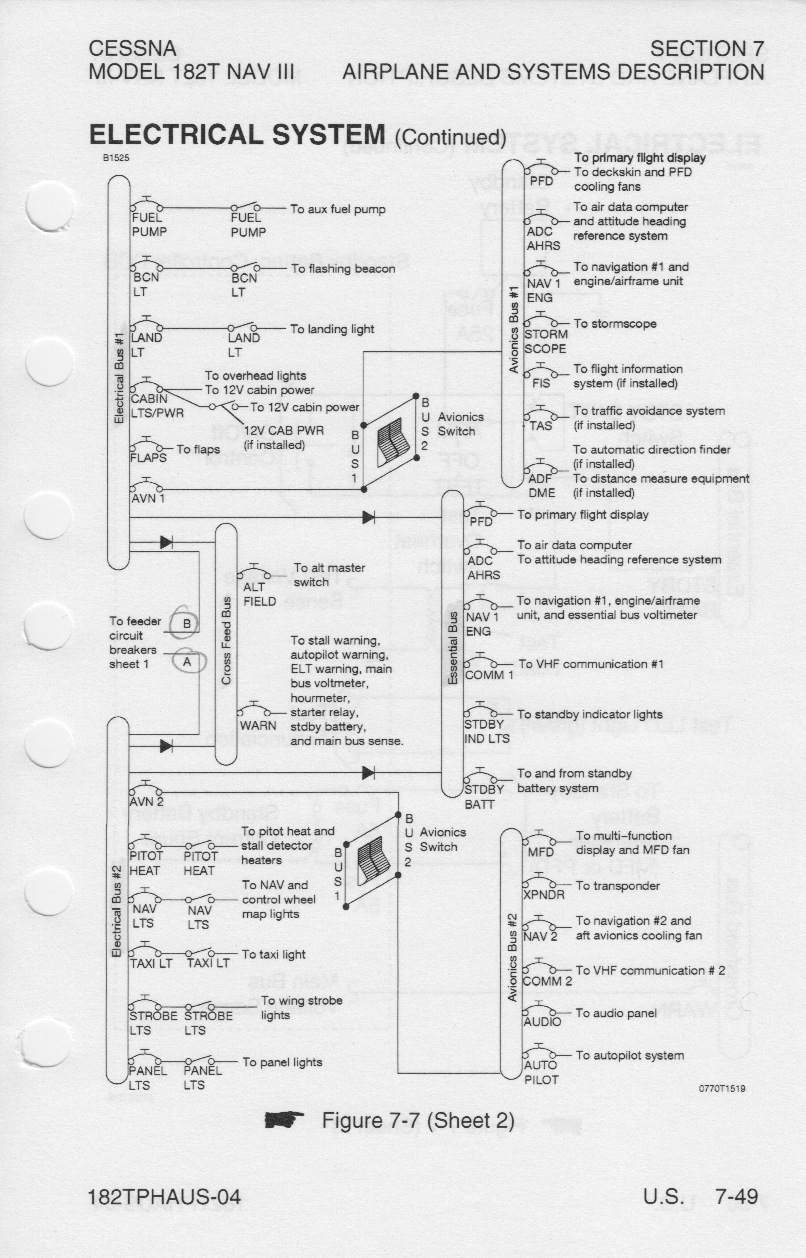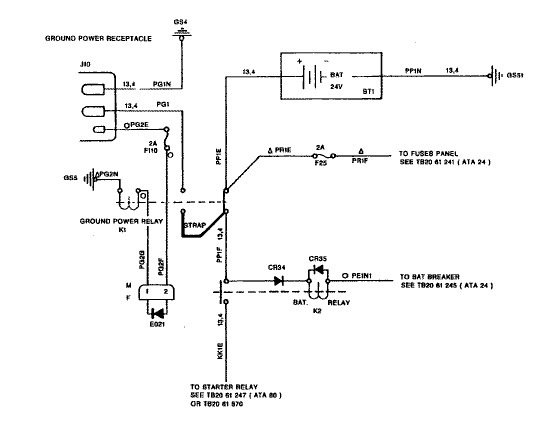Hello there,
I am struggling with the electrical system diagram of my aircraft (Cessna 182T G1000), and electrical understanding in general…
I can give you two important diagram for this case:


I guess that I should get 3 things from that power plug:
- 1) power for avionics, around 28.5v to get everything working, 25A-50A I guess would be needed
- 2) power to charge the main battery and eventually emergency battery.
- 3) power to crank the engine
The first questions deal with the Master switch:
- with the BATTERY switch OFF, will it power the Essential Bus or charge anything ?
- with the BATTERY switch ON, will it try to charge the main battery ?
Dealing with charging the battery, I understood that we should use smart chargers that bring constant current (A) and not constant voltage (as need the avionics). So I guess that 1) and 2) need different devices.
I also understand that using a device to power the avionics (1), would damage the battery if the battery is flat (due to violent charging – but the same would occur with the alternator charging).
At last, if I want to start the engine, I should look at external batteries. If I understand correctly only batteries can give enough instant current (up to 400A) to crank the engine.
So, we should have three devices:
- one to start the engine
- one to feed the avionics (28.5 constant voltage)
- one to charge the batteries (smart chargers)
Maybe you could help me with better considerations about all these options. And please, show me what the devices look like !
PetitCessnaVoyageur wrote:
with the BATTERY switch OFF, will it power the Essential Bus or charge anything ?
It won’t do anything, as the external power relay will not engage. (it is engaged by the master battery switch)
PetitCessnaVoyageur wrote:
with the BATTERY switch ON, will it try to charge the main battery ?
Yes
I would recommend using an external power unit, based on a battery, combined with a charger. That case you will have sufficient current to start the aircraft, and you will have sufficient load combined with small charger so the risk on issues with the power supply are smaller.
You would need a separate trickle charger if you want to keep you battery charged. You won’t want to have the master switch turned on all the time.
Interesting you can charge the battery via the external power socket. On some types you can, on others you can’t. On the TB20GT you have this (more here)

so there is no way at all to charge the battery when external power is applied. However some earlier models did have that capability.
As my link above shows, there is a weakness in that the ground power relay also carries the starter motor current! In the Cessna example above it doesn’t but the “battery relay” seems to. The heavy current is carried by the normally-closed contacts which are normally “weak” (only the spring pressure makes them touch) and after a while these get fused together. The relays used in GA are the old Stancor types which are “just OK” for the old style slow starter (say 50A) but if you fit one of the high speed starters you get a lot of fun…
I don’t think one can tell from the “summarised” diagrams shown. You need an actual wiring diagram e.g. one which shows the wire labels. The C182 ones above are also only summarised.
vic wrote:
The new starters seem to have small motors at high revs driving reduction gears, so amps should be less. Vic
That should make no difference at all as far as the current is concerned. To turn over a 180hp engine, you need a starter of – say – 20hp, no matter if these are delivered by a slow or fast rotating electric motor. In the end, they have to come from the electrical power applied and a given voltage will always require a given current for the same mechanical power output. But your high-revving motor will definitely reduce the staring current (not sure if this is the correct translation for the german “Anlaufstrom”) because the usual thick-wired slow revving motors are almost like a short circuit until they start turning.
what_next wrote:
staring current (not sure if this is the correct translation for the german “Anlaufstrom”)
Assuming you actually meant to write “starting”, it sounds right. AFAIK there are several names for it in English.
vic wrote:
Old slow starters draw hundreds of amps with direct drive. The new starters seem to have small motors at high revs driving reduction gears, so amps should be less. Vic
This is incorrect. Typically a light weight starter draws about twice the amount of current of a heavy weight starter. It is somewhat strange that you can exchange these as a direct replacement on aircraft with the battery in the rear. Due to the longer cable, and twice the amount of current the voltage drop is quite high.